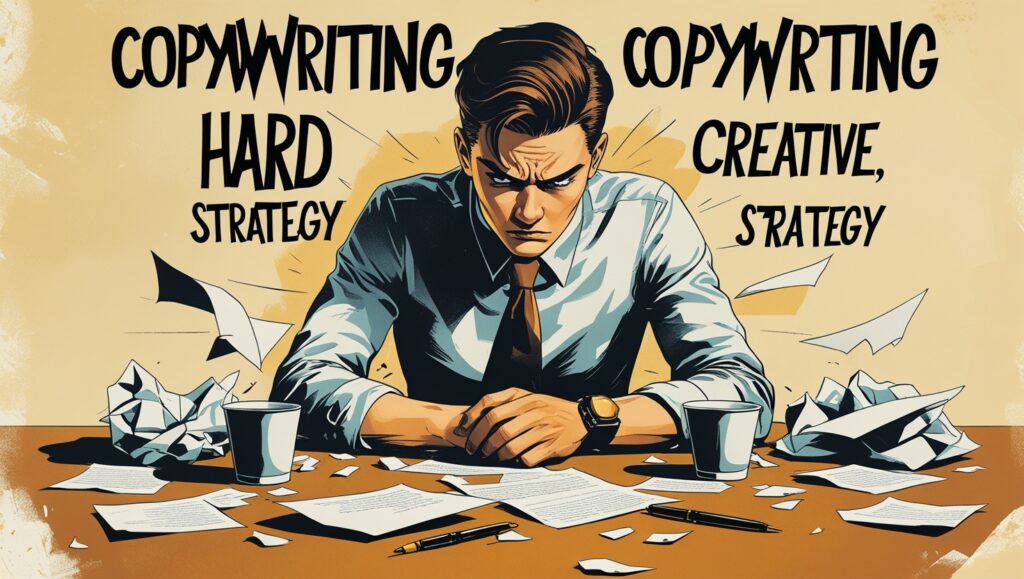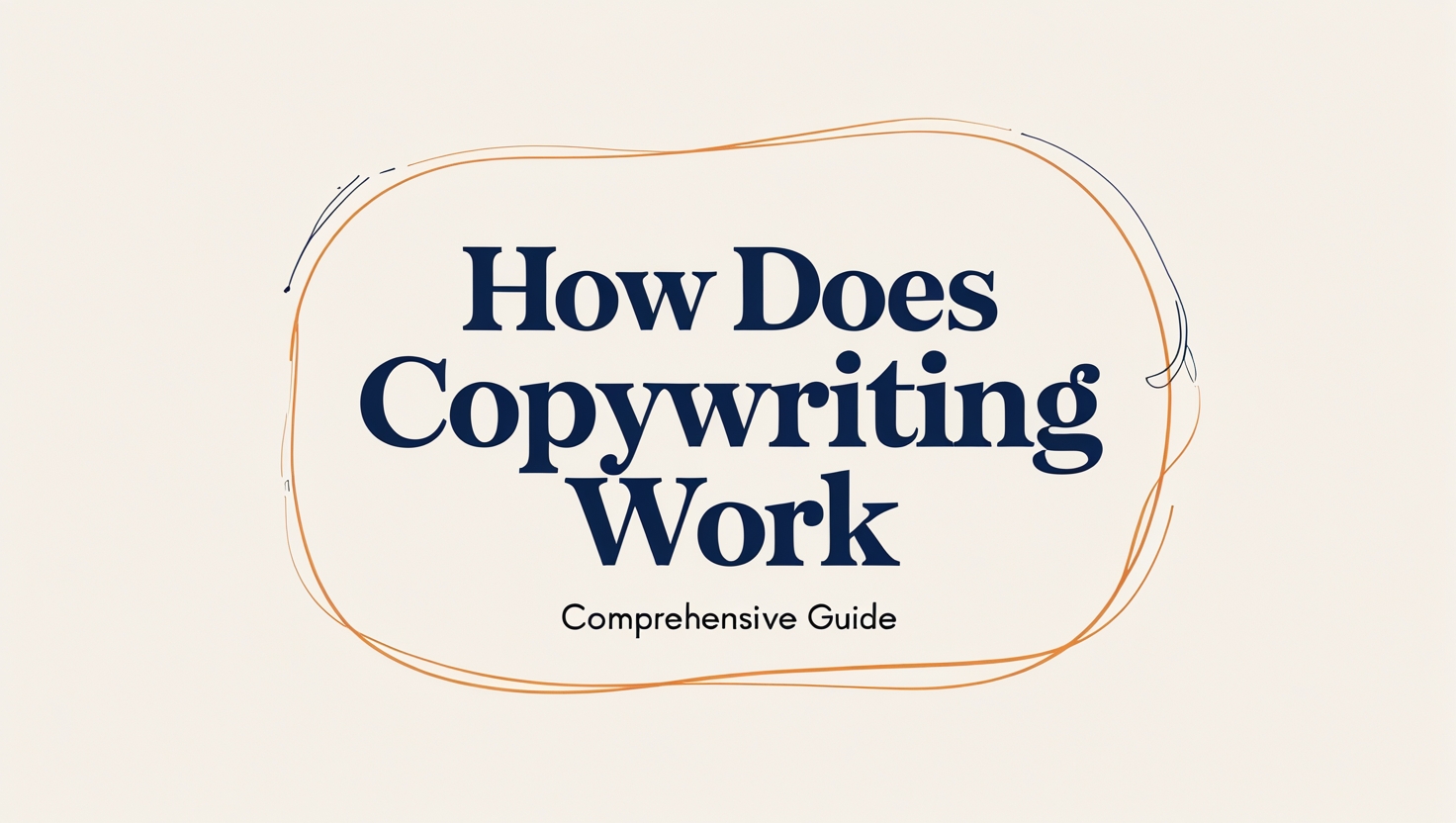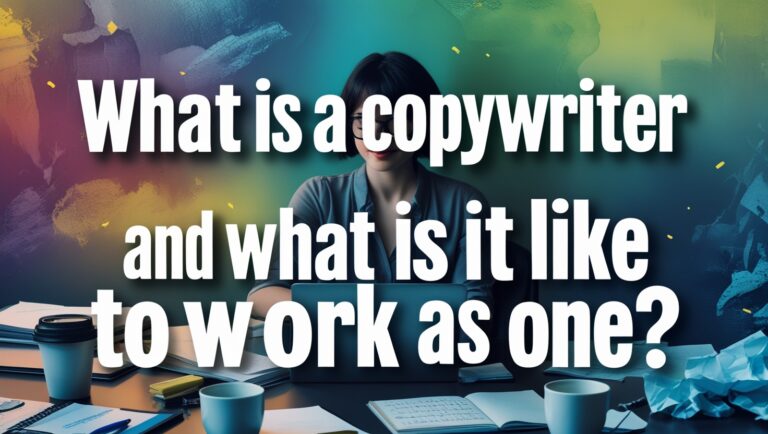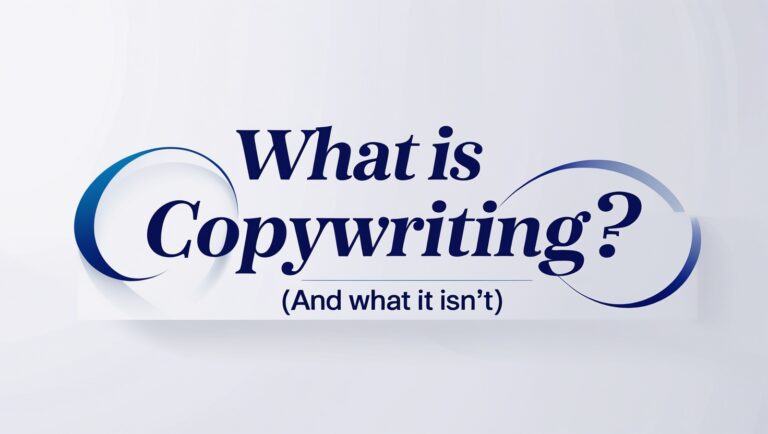How Does Copywriting Work: Comprehensive Guide
Have you ever paused to think about how certain words compel you to click “Buy Now,” sign up for a free trial, or read a message all the way to the end? You are not alone. In a world saturated with ads and digital content, how does copywriting work to stand out and convert casual browsers into loyal customers? That single question sparks an entire discipline focused on persuasive writing, rooted in human psychology and effective marketing strategies.
In this extensive guide, we will peel back the layers of how copywriting works—from the fundamentals of crafting engaging headlines to the proven formulas that guide readers toward a specific action. You will learn about the famous 5 C’s of copywriting, explore powerful rules like the golden rule and the 80/20 principle, and delve into established formulas such as AIDA and the 4 P’s. We will also address recurring questions about whether you can earn $10,000 a month as a copywriter, if you really need to bid for work on platforms like Upwork, and whether you must choose a niche to succeed.
If you are a business owner or marketer hoping to improve your brand messaging, or an aspiring writer looking for clear, reliable instruction, you have come to the right place. By the end, you will not only grasp what copywriting is, but also how does copywriting work in practical, powerful ways across diverse platforms. Let us begin.
Table of Contents
- What Is Copywriting?
- How Does Copywriting Work?
- What are the 5 C’s of Copywriting?
- What is the 80/20 Rule in Copywriting?
- What is the Golden Rule of Copywriting?
- What are the 4 P’s of Copywriting?
- What is the Basic Copywriting Formula? (AIDA)
- What is Copywriting Hard Skill?
- Can You Make $10,000 a Month with Copywriting?
- Do You Need to Bid for Work on Sites Like Upwork?
- Do You Have to Choose a Niche in Copywriting?
- Conclusion

What Is Copywriting?
Copywriting is the art and science of writing text specifically for marketing, sales, or promotional purposes. Unlike creative writing meant to entertain or inform in a broad sense, copywriting homes in on a specific goal: to motivate readers to take a desired action. Whether you see a banner ad offering 50% off your first order or receive an email tempting you to sign up for an online course, the words that nudge you to click “Buy,” “Learn More,” or “Sign Up” are all forms of copy.
But how does copywriting work so effectively? It leverages human emotions, practical benefits, and logical reasoning to guide potential customers from casual interest to firm commitment. A skilled copywriter does not merely list product features. Instead, they highlight benefits (the “what’s in it for me?” factor), use storytelling or emotional triggers, and address common objections, ultimately persuading someone to act.
Copywriting differs from standard content writing in its tight focus on conversion. While content writing can inform and engage broadly, copywriting aims to convert. It might be a conversion from reading a social media post to clicking a link or from browsing a product page to completing a purchase. In short, copywriting is the invaluable link between a brand’s product or service and the audience’s genuine needs or desires.
How Does Copywriting Work?
To really understand how copywriting works, picture a series of mental steps that guide a reader from being unaware or merely curious to being ready to respond—often by making a purchase. Successful copywriting aligns with the psychological flow of attention, interest, trust, and decision-making. Here is an overview:
- Captures Attention: The first job of any marketing copy is to stand out. Whether through a bold headline, a provocative statement, or a visually striking ad, copy must immediately grab the reader’s focus amid a sea of competing messages. If you fail here, no one reads on.
- Relates to the Reader’s Need: Once you have their attention, successful copy shows empathy for the reader’s specific problem, desire, or challenge. This could be a struggle with time management, a wish for better health, or an urge to travel more comfortably. By mirroring the reader’s own thoughts or frustrations, the copy signals, “This is about you.”
- Presents a Clear Solution: Next, good copywriting seamlessly introduces the solution—your product, service, or idea. It explains how it resolves the pain point or fulfills the reader’s aspiration. The focus is on benefits, not just features. A feature describes what something is. A benefit shows why it matters to the customer.
- Builds Trust and Credibility: Before someone commits, they need to trust that the claims are real. Copywriting fosters credibility by referencing data, testimonials, endorsements, or a proven track record. This is where stats, case studies, or success stories can carry enormous weight.
- Encourages Action: Finally, copywriting culminates in a call-to-action (CTA). This CTA—like “Buy Now,” “Sign Up Today,” or “Book a Call”—makes the desired next step explicit. After guiding the reader’s emotions and logic, the CTA provides an immediate way to act on newly formed motivation.
Each of these stages leverages proven psychological triggers—like the fear of missing out (scarcity), the desire for belonging or success (social proof), or the comfort of trusting an authority figure. Essentially, how does copywriting work? It resonates with what your audience genuinely wants or needs, removes their doubts, and steers them toward a particular response, often in a concise yet powerful manner.
What are the 5 C’s of Copywriting?
Many experts distill strong copy into the “5 C’s of Copywriting.” This framework ensures no key element is overlooked:
- Clarity: Be direct and uncomplicated. Readers should immediately understand your main point or offer. Avoid jargon unless your audience is highly specialized and expects it.
- Conciseness: In our fast-paced world, brevity matters. Every sentence should earn its place. Tight, sharp writing helps hold attention and delivers a punchy message.
- Customer-Centric: Orient the copy around the reader’s interests, not your own. Speak to their worldview, needs, and desires. Commonly, this is summarized as “write for them, not for you.”
- Credible: Use evidence, stats, or testimonials to show legitimacy. If your product “triples conversion rates,” share proof. Trust is crucial for persuasion.
- Compelling: Finally, the copy should spark curiosity, excitement, or urgency. Whether it is emotion-driven or fact-focused, it must give people a reason to keep reading and ultimately take action.
When you apply these 5 C’s systematically, you produce copy that is both easy to understand and powerful in its persuasive impact. The difference between “just any ad” and an ad that drives serious conversions often comes down to hitting these five markers consistently.
What is the 80/20 Rule in Copywriting?
The 80/20 rule, or Pareto Principle, states that 80% of outcomes often stem from 20% of efforts or inputs. In copywriting, it is a reminder to concentrate on the small yet critical aspects that make the biggest impact.
- Headline Impact: In many scenarios, about 20% of your copy (the headline and opening lines) determines 80% of the result. If the headline is weak, people never dive deeper.
- Research vs. Writing Time: Some copywriters say you should spend 80% of your time researching and 20% writing. This ensures you deeply understand the audience and craft a message that resonates. Others might find the reverse suits them better, but the principle stands: a small portion of your tasks yields the majority of value.
- Focus on Key Elements: Whether it is the CTA, product benefits, or the opening hook, identify the top elements that drive conversions. Perfecting these will often yield the greatest returns.
Practically speaking, the 80/20 rule prompts you to ask: Which parts of my copy or approach are most crucial to conversion, and am I investing enough time in them? By applying this lens, you avoid wasting energy on low-impact details and prioritize what truly sways readers. That is a huge step toward mastering how copywriting works for optimum results.
What is the Golden Rule of Copywriting?
The golden rule of copywriting can be distilled as: Put your reader first. Always write with the reader’s needs, questions, and emotions in mind. People tend to be inwardly focused—wondering, “What’s in it for me?” If your copy does not quickly address that, their interest fades.
Whether you call it customer-centric writing, the golden rule, or just common sense, the idea remains: speak to your audience’s desires and frustrations, not your own self-importance. Every sentence should show empathy, offer a relevant solution, or clarify a crucial benefit. When readers feel understood and see clear value, they lean in. When the copy is ego-centric (e.g., “We are the biggest, best, oldest company…”), they tune out.
Remember, the golden rule also means being truthful, genuine, and respectful. Manipulative copy or exaggerated claims might initially catch attention but will lose trust in the long run. Real empathy and authenticity resonate much better. If you are genuinely aiming to help the reader (or buyer), that sincerity will come through in your words.
What are the 4 P’s of Copywriting?
Another frequently mentioned framework in the copywriting world is the 4 P’s: Promise, Picture, Proof, and Push. It is a highly effective structure for ads, sales pages, and other promotional materials:
- Promise: Open by stating a bold, benefit-driven promise. For instance, “Discover the simple strategy to double your daily productivity.” This sets the tone for what readers will gain.
- Picture: Next, paint a vivid mental image of what life looks like when they have achieved the benefit. “Imagine breezing through your to-do list by lunchtime, free to focus on what truly matters.”
- Proof: Address any skepticism by backing up claims with proof. Case studies, testimonial quotes, or data allay doubts. “In a recent study, 87% of users reported at least a 50% increase in completed tasks.”
- Push: Finally, give a clear CTA—“Try our 14-day productivity challenge and watch your schedule transform.” This step urges immediate action rather than letting the reader drift away.
Using the 4 P’s ensures you grab attention with a promise, engage emotions through a picture, confirm legitimacy via proof, and then prompt a decisive move forward. The beauty of this formula is its simplicity; you can adapt it to almost any offer, from an email marketing campaign to a full-blown sales letter.
What is the Basic Copywriting Formula? (AIDA)
One of the oldest and most universally applied copywriting formulas is AIDA: Attention, Interest, Desire, Action. AIDA acts as a roadmap for structuring persuasive text, giving your message a clear progression.
- Attention: Start strong with a headline or opening that disrupts the reader’s routine. A bold question, a startling statistic, or an unusual statement can all do the trick.
- Interest: Next, keep the momentum by showing why the topic matters. Share relevant details, anecdotes, or problems that resonate with your audience.
- Desire: Here, describe how the product or service improves life, solves a major challenge, or provides an enticing outcome. Highlight benefits and emotional drivers.
- Action: Conclude with a direct invitation to take the next step—click, sign up, call, etc. Without a CTA, even the most compelling message lacks a final push.
For example, imagine a weight-loss program pitch following AIDA:
- Attention: “Are you tired of trying every diet in the book and still not shedding the weight?”
- Interest: “Most diets fail because they ignore the root cause of cravings—stress and hormonal imbalance.”
- Desire: “Our 28-Day Reset Program addresses cravings from the inside out, helping you feel confident in your clothes again and bursting with energy.”
- Action: “Ready for a fresh start? Sign up now and take the first step toward a healthier, happier you.”
This is AIDA in action: hooking readers, building their interest, stoking their desire, and guiding them to an immediate CTA. It is no coincidence that AIDA remains a mainstay—anyone learning how copywriting works typically finds this formula intuitive and highly effective.
[Insert Image: alt=”How does copywriting work – AIDA diagram (Attention, Interest, Desire, Action)”]
Is Copywriting a Hard Skill?

In job descriptions, you might see references to hard skills versus soft skills. Copywriting is considered a hard skill because it involves a specific, teachable set of techniques and knowledge that can be practised and measured. It is not merely having a flair for words; it includes:
- Technical Writing Competency: Grammar, syntax, and clarity. Good copywriters must communicate ideas precisely.
- Persuasion Methods and Frameworks: As we have seen, formulas like AIDA or the 4 P’s guide how to present ideas in the most persuasive order.
- Understanding of Marketing Principles: Target audience, customer journeys, brand positioning, and more. Copywriters who grasp broader marketing strategies can align their copy effectively with campaigns.
- Research and Data Analysis: Crafting persuasive copy often requires analyzing customer pain points, competition, keywords for SEO, and conversion metrics. You test and iterate.
- Platform-Specific Strategies: Writing for a Facebook ad differs from writing a long-form blog post or email funnel. Each format has best practices and constraints.
By contrast, soft skills like creativity, empathy, and time management support the technical craft. Both are crucial, but only hard skills like the ability to write compelling headlines, weave in data-driven proof, and structure persuasive narratives are testable in a professional sense. That is why organizations often seek experienced copywriters who can prove their results, for instance, by showing before-and-after conversion rates or successful campaigns they have written.
Can You Make $10,000 a Month with Copywriting?
A very common question is whether it is truly possible for a copywriter—especially a freelancer—to earn $10,000 a month. The short answer is: yes, it is absolutely achievable, but it requires the right mix of skill, experience, and business acumen.
Pathways to $10k Months
- High-Value Clients: Some niches—like financial services or direct-response health copy—pay premium rates because the stakes are huge. Writing a single sales page or launch campaign can bring in thousands if the copywriter is truly skilled.
- Retainers and Ongoing Work: Signing a few retainer agreements where clients pay a fixed monthly fee for continuous copy needs can secure a stable income. For instance, a business might pay $3,000/month for weekly email campaigns and blog posts.
- Upselling Services: Beyond a single project, top copywriters often offer related services—such as email funnels, landing page optimization, or brand voice guides. These higher-ticket packages quickly raise monthly earnings.
The Reality Check
- Not Instant: Earning $10k or more per month will not happen overnight. It usually comes after you have built a strong portfolio, reliable client relationships, and a reputation for delivering results.
- Niche Expertise Helps: If you are a generalist, it might take longer to reach those higher rates. Specializing in a lucrative or in-demand niche can accelerate your climb.
- Freelance vs. In-House: While some senior in-house copywriters can earn six-figure salaries, the $10k/month figure is often cited by freelancers who manage multiple projects or premium clients simultaneously.
In short, copywriting can be extremely lucrative once you combine strong skills with effective marketing of your services. It is not a get-rich-quick scheme, but with persistence and the right positioning, $10k months become a realistic goal. Moreover, the skills you develop can open doors to other careers in marketing, consulting, and even entrepreneurship—further expanding your potential earnings.
Do You Need to Bid for Work on Sites Like Upwork?
A practical concern for many aspiring freelancers is whether they must bid for jobs on platforms like Upwork or Fiverr. The answer is no—you do not have to rely on bidding sites. They are one avenue for finding projects, but they are not the only path to success in copywriting.
Pros of Freelance Marketplaces
- Easy Access to Potential Clients: Plenty of businesses post copywriting jobs, providing an opportunity for new writers to gain experience.
- Streamlined Payments: Sites handle invoicing and payment, removing some administrative hassle.
- Portfolio Building: Early on, it can be a place to land small gigs, collect testimonials, and hone your craft.
Cons to Consider
- Fierce Competition: You may be vying against hundreds of other freelancers, often leading to lower rates or a race to the bottom.
- Platform Fees: Upwork and similar sites take a percentage of your earnings.
- Limited Relationship Building: Platforms can discourage direct communication off-site, hindering your ability to build deeper client relationships.
Alternatives
Many top copywriters find clients through networking, referrals, or direct outreach. For instance, you can research businesses in your niche and email them with a tailored pitch. Social media platforms like LinkedIn are also fertile ground—showcasing your expertise through articles or engaging posts can attract clients organically. Attending conferences, local business meetups, or digital marketing groups can lead to valuable connections, too.
So, do you need to bid for jobs on Upwork to succeed? Definitely not. Some copywriters start there to gain initial experience and then move on to more lucrative, independent avenues. Others skip it altogether. If you wish to explore the specific pros and cons in detail, we discuss this further in our article: Do you need to bid for work on sites like Upwork?.
Do You Have to Choose a Niche in Copywriting?

“Do I need a niche?” is another frequent question from new copywriters. The short answer: it is not mandatory, but it can significantly help in establishing expertise, attracting higher-paying clients, and streamlining your marketing.
Benefits of Niche Specialization
- Authority: When you deeply understand an industry—say SaaS, fintech, or e-commerce fashion—you speak the client’s language. This expertise can justify higher fees.
- Marketing Clarity: Crafting your portfolio, website, and LinkedIn profile around a specific niche makes it easier for ideal clients to recognize you as the go-to expert.
- Efficiency: Familiarity with a certain audience or product line speeds up research and writing.
Downsides of Niching Too Soon
- Limiting Opportunities: In your early days, you might not know which niche you prefer or excel in. Trying different areas helps you discover unexpected strengths or passions.
- Risk in Shifting Markets: If your chosen niche experiences a downturn, it can affect your workload.
A Balanced Perspective
You can start broad, accept a variety of projects, and see where you excel. Over time, patterns might emerge—certain industries you naturally connect with or repeat clients who recommend you in that space. That can be your cue to niche down if you wish.
Remember, it is not a rigid rule: you can pick a niche for your main marketing message and still accept attractive projects outside that niche if you want. For more specific considerations, check out Do you have to choose a niche in copywriting? which explores when and how to specialize effectively.
Conclusion
If you have ever wondered how does copywriting work, this guide should have painted a vivid, step-by-step picture. Copywriting is a discipline rooted in psychological persuasion and strategic marketing. By mastering frameworks like the 5 C’s, the 4 P’s, and AIDA, you can craft messages that grab attention, connect deeply with readers, and inspire them to act.
Beyond knowing the techniques, remember the golden rule: Always write for the reader’s benefit. Whether you plan to offer freelance services, boost your own business’s marketing, or develop a full-fledged career in copywriting, staying customer-focused is the surest path to success. Add in key principles like the 80/20 rule and proof elements to bolster credibility, and you will see how powerful words can be in driving tangible results.
As your skills grow, you might find that copywriting can open expansive career doors, including other high-potential marketing roles. You may also decide whether to niche down or venture onto freelance platforms based on personal preference and market fit. Whichever path you choose, the ability to write persuasive copy is an invaluable asset—a hard skill that can make or break a marketing campaign.
Now is the time to put these insights into action. Try applying AIDA or the 4 P’s to your next blog post, ad, or landing page. If you aim high, you could position yourself to earn $10,000 a month. If you want to kickstart your freelance journey, consider whether or not you will bid on platforms like Upwork or pursue direct outreach. The possibilities are limitless once you realize how copywriting works in shaping consumer behaviour and fueling business growth.
Ready to take the next step? Start by reviewing your existing copy—whether it is on a website, an email sequence, or a social media ad—and see how you can refine it using the concepts discussed. If you found this guide helpful, feel free to share it with a friend or colleague who might benefit from understanding the power of effective copywriting.
Master the words, and you master the results.
For more insights into persuasive writing and data-driven marketing, you could check out the CXL blog for expert tips and case studies.






